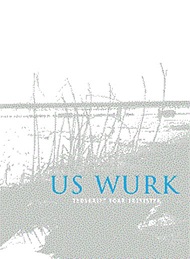Wrotte en wrame, wrotte en wrotte, wrotte en dwaan. Ferbale hendiadys yn it Frysk
Abstract
Departing from the stylistic observation that Modern West Frisian possesses quite a number of formulaic pairs consisting of two synonymous verbs (e.g. wrotte en wrame ‘to work hard, to toil’), I compare three types of verbal hendiadys in this article: apart from the hendiadys of two synomymous verbs, hendiadys of two identical verbs (e.g. wrotte en wrotte) and hendiadys of a verb with the dummy verb dwaan ‘to do’ (e.g. wrotte en dwaan). All three types involve strengthening of the first verb and express durative aspect. Verbal hendiadys differs from other combinations of two bare verbs (i.e. pairs of different verbs or repetitions of identical verbs) in expressing non-additive and non-iconic meaning and in neither allowing an intonational break before en nor a syntactic split. I propose a unifying analysis for the three types of verbal hendiadys, accounting for the similarities and the differences (hendiadys of two synonymous verbs is lexical, whereas the other two types are syntactic, hendiadys of a verb with dwaan has primary stress on the verb and secondary stress on dwaan, whereas the other two types have primary accent on both verbs). Specifically, I claim that verbal hendiadys is a reduplication structure, in which the former coordinating conjunction en has grammaticalized to an aspectual (durative) suffix with a reduplication feature. Reduplication is achieved by copying the base verb, by spelling out the light verb DO or by inserting a lexical pair of synonyms.

